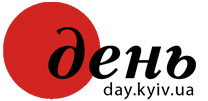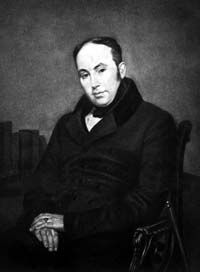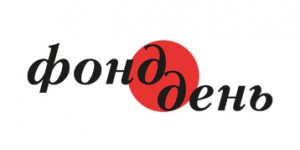Where there is no sacred freedom
There will never be good...
This clear and truly universal formula, true for all times and peoples, is not just the fruit of Shevchenko’s own soul-searching. These lines are the quintessence of his inimitable spiritual experience, the philosophy of an individual for whom Freedom is a vital and overriding idea that can only be discussed with utmost piety and awe. Shevchenko is one of the world’s greatest singers of freedom (shrewd contemporaries understood him, for the Ukrainian Bard’s words are of a far greater than only literary import). The great Taras knew from childhood what it meant to constantly suffer both crude physical and refined moral humiliation (from a birch whipping for talent to a cold snub from landlord Engelhardt who looked through you as if you were not there...). This is why Shevchenko came early to the conclusion that freedom and a dauntless spirit is normal and the only possible condition for any person. Yet, he was himself a serf, an absolutely downtrodden and helpless being.
The Bard’s liberation from serfdom is a page extremely interesting and still to be studied in Ukrainian-Russian spiritual relations. There still are many myths, stereotypes, and even outright slanders surrounding this story. What is clear is that our common past is rich not only in Russian imperial domination but also in something that unites the Ukrainian and Russian peoples and is the common asset of Ukraine and Russia. For, to take an impartial view of that distant time, one must remember the way the best Ukrainians and Russians treated each other.
DIAMOND IN THE ROUGH
Let us mentally go back to 1836-1837. The young Taras Shevchenko is a struggling painter, apprenticed for three years to Petersburg master Stepan Shiriayev. But this is not the point. The point is that Taras is a serf of guards officer Pavel Engelhardt. A serf is a creature unable to shape his own destiny.
Engelhardt was once brilliantly described by Oleksandr Konisky, the author of a perhaps still unsurpassed biography of Shevchenko. He was “if not an example then at least a notable representative of the ‘hodgepodge’ Ukraine is now crawling with. He seems to be a German by birth, an Orthodox by faith, a Pole or a Frenchman by language, and a devout Russian officer by career. A man of cosmopolitan customs — a signor, a mister? Owner of Ukrainian serfs on Ukrainian soil. A haughty ‘pig in Torzhok slippers,’ as Briullov said, when he dealt with the common people and all those whom he considers inferior, and a toady when he encountered somebody superior. In general, a typical landlord.” It was up to this man to decide what Shevchenko was to do, whether Taras’s radiant talent of a artist and poet would perish or flourish.
Shevchenko could not have survived had he not demonstrated willpower. The first and essential step toward the coveted liberation was an “accidental” meeting (but can there be anything accidental in the life of geniuses?) with a compatriot born in Vilshana (Cherkasy province), Ivan Soshenko, the son of a poor townsman and a young student at the Academy of Arts. Soshenko played a special role in our great poet’s liberation and further spiritual growth: it is he who gave the future Bard the initial and very crucial impulse to strive for his coveted Freedom. He thus won the everlasting gratitude of Ukrainians.
This meeting occurred around 1836 in Petersburg’s Summer Gardens. Taras was painting the statue of Apollo at the time. Once, walking down the Gardens on a moonlit summer night, Soshenko noticed that “a barefoot and bareheaded ragamuffin, with a pied shabby gown on, was drawing a statue in pencil” (This was also told by another Cherkasy fellow countryman, Father Petro Lebedyntsev). A humane man Soshenko decided to “exercise supervision” over the poet and saw very soon what exceptional talents were hidden in this diamond in the rough (as Briullov and Zhukovsky later wittily said).
The latter began to organize the “golden relay race” (or diamond chain) of Ukraine’s and Russia’s best people who did their best to wrest the future luminary of Slavic and world culture from servitude. Among the Ukrainians were (in addition to Soshenko), above all, poet, writer and public figure Yevhen Hrebinka, and Vasyl Hryhorovych, conference secretary of the St. Petersburg Academy of Arts (Shevchenko dedicated his poem Haidamaky to him). They understood only too well that the young Taras should study at the Academy of Arts to keep the “sacred fire” burning in his soul, but this was impossible so long as he remained a serf.
The poet’s friends (above all, Soshenko) introduced him to the circle of contemporary Russian culture stars, such as the prominent painter Karl Briullov, famous poet Vasily Zhukovsky, and recognized painter Aleksei Venetsianov. Out of heartfelt sympathy for the young man, Briullov decided to personally negotiate with Engelhardt the conditions of his liberation. This conversation (in the spring of 1837) can be considered the departure point of further developments.
LOTTERY
Consider these two figures. On the one hand, a haughty and conceited typical landlord and, on the other hand, an individual known without exaggeration the world over as Karl the Great (this is how the painter of The Last Days of Pompeii was referred to, without a trace of irony). Naturally, Briullov had every reason to hope that Engelhardt would heed his appeal to be human and set Shevchenko free. Briullov began with the basics, such as humanity, philanthropy, etc. Then the dialog took a more specific shape, but the host, who at first seemed to show a favorable disposition, showed the true colors of a “pig in Torzhok slippers” (as Briullov immediately nicknamed him). Engelhardt made it clear he would only set his serf free for a handsome sum of money, the more so that he was aware of Taras’s artistic talent (this pushed up the price considerably in the eyes of this market-oriented swine).
It is no accident that in the last years of his life Shevchenko asked publisher V. P. Zotov, who was going to print his biography, to note that “it was precisely Briullov who bought Shevchenko out of serfdom.” Apart from being noble and humane, Karl Briullov possessed such a trait as determination to achieve his goal. He requested Soshenko to discuss on his (Briullov’s) behalf with Engelhardt the concrete price of the Bard’s liberation. Being a bit shy, Soshenko turned to Venetsianov for help in this delicate matter.
Venetsianov began his conversation with the serf-owning toad not with basics but with a concrete proposal that he quote the price. Engelhardt quoted 2500 rubles, a staggering sum at the time. What was to be done? Briullov, Zhukovsky, who, unable to bear this tyranny, also offered his services (as a sign of gratitude, Shevchenko dedicated his Kateryna to him), as well as Hryhorovych, Venetsianov, and young artist Apollon Mokritsky conferred. They soon reached a decision. Mokritsky wrote in his diary on April 2, 1837, “Briullov called me after lunch. In his house I saw Zhukovsky, who wanted to know details about Shevchenko. Thank God, our project (liberation. — Author) is likely to succeed. Briullov began to paint Zhukovsky’s portrait today — a striking resemblance!”
This portrait played a decisive role in the liberation of Taras. Briullov, known for his charity, and Zhukovsky “blazed a trail for Taras to walk way from despair to normal life” (Konisky). To be more exact, they decided to dispose of Zhukovsky’s portrait by lottery and use the money earned to buy Shevchenko’s freedom. Although this was the only possible way out, it took a year, due to various circumstances, for the scheme to materialize (although Shevchenko says in his story The Artist, “The portrait was soon painted...,” that was not quite the truth). The point is that when Nicholas I’s courtiers learned about the future portrait and lottery, they also wanted to have the picture. So Zhukovsky had to hold the lottery at Anichkov Palace, where the royal family was staying at the time. This delayed the whole process. Moreover, from July to December 1837, Zhukovsky made a tour of Russia with the heir to the throne, future Tsar Alexander II, as his mentor. Meanwhile, Briullov was taken ill and, in addition, overburdened with tsarist orders that he could not refuse.
Finally, the finished portrait was raffled in mid-April 1838, at Anichkov Palace “by means of playing cards,” as custom dictated. The participation of the tsarist family (let us note, as private individuals) later gave rise to speculation that Shevchenko paid the monarch back “with black ingratitude.” But it should be pointed out that members of the imperial family donated 1000 of the required 2500 rubles as private persons only. They did not care about Shevchenko: what really mattered was the ardent desire of Princess Maria, the tsar’s daughter and a great “connoisseur of arts,” to get the portrait. Moreover, another private lottery was held “in a narrow circle,” which in fact fetched the main part of the required funds (this was confirmed by artist N. D. Bykov, a contemporary of Shevchenko). For this reason Shevchenko had ample reason to write in his Journal on June 19, 1857, “The heartless satrap and the tsar’s confidant (Orenburg governor V. A. Perovsky — Author) imagined that I was liberated from serfdom and educated at the tsar’s expense and, instead of thanking my benefactor, drew a caricature on him... I do not know whence this tall tale has come. All I know is that it cost me not so cheaply.”
But on that day, April 22, 1838, the happy Taras (he even rushed to hug Soshenko, crying out, “Freedom! Freedom!”) received his instrument of manumission with the coveted words “He, Shevchenko, is free to choose any profession he wants.” Later, when he won glory, he expressed gratitude to both the Ukrainians and Russians, to whom he owed his freedom. And, to sum up his life, the poet devised one more clear-cut formula, a bitter reproach,
Oh, people! Poor people!
What’s the use of tsars?
What’s the use of dog-catchers?
For you are people, not dogs








